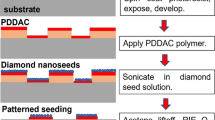Abstract
We calculated energies required to remove atoms from various configurations on (111), (110), (100), and (211) HgTe surfaces. The excess pair energies for various species are then calculated and are used in a thermodynamic model to study the growth. All energies are obtained using a Green’s function method. The pair distributions are calculated from these energies in a generalized quasi-chemical approximation. The calculated critical temperatures for surface roughness transition are found to be considerably higher than the usual growth temperature of 185°C, so the growth on these surfaces is expected to be layer-by-layer with formation of two-dimensional islands. However, among the surfaces studied, only the (211) surfaces have an attractive binding energy for Hg, making those surfaces suited for better growth. The critical temperature for growth on (21 l)Hg is slightly higher than that for (211)Te, but we also find that Hg sticking coefficient on (21 l)Hg surface is considerably lower than that on (21 l)Te surface. These calculations are consistent with the observed higher growth rate of the (211)Te surface. Our calculations suggest that there will be fewer grown-in vacancies and Te antisites, at the expense of growth rate and sticking coefficient, for crystals grown on (211)Hg surface. We further calculated the Hg and Te vacancy formation energies as functions of surface orientations and layer depth. The cation vacancy formation energies from completed surface regions (islands) are higher than bulk values near anion terminated surfaces and smaller than bulk values near cation terminated surfaces.
Similar content being viewed by others
References
R.J. Koestner and H.F. Schaake,J. Vac. Sci. Tech. A 6, 2834(1987).
S. Krishnamurthy, A.-B. Chen and A. Sher,J. Appl. Phys. 68, 4020 (1990).
S. Krishnamurthy, A.-B. Chen and A. Sher,J. Crys. Growth 109, 88 (1991).
In Refs. (2) and (3), the termconcentrated is used to denote one in which all sites in the surface layer are occupied. Adilute surface is one with a few surface layer sites occupied.
M.A. Berding, A. Sher and M. van Schilfgaarde,J. Electron. Mater. 24, 1127 (1995).
Author information
Authors and Affiliations
Rights and permissions
About this article
Cite this article
Krishnamurthy, S., Chen, A.B. & Sher, A. Comparison of HgTe materials grown in (100), (110), (111), and (211) Orientations. J. Electron. Mater. 25, 1254–1259 (1996). https://doi.org/10.1007/BF02655016
Received:
Revised:
Issue Date:
DOI: https://doi.org/10.1007/BF02655016




